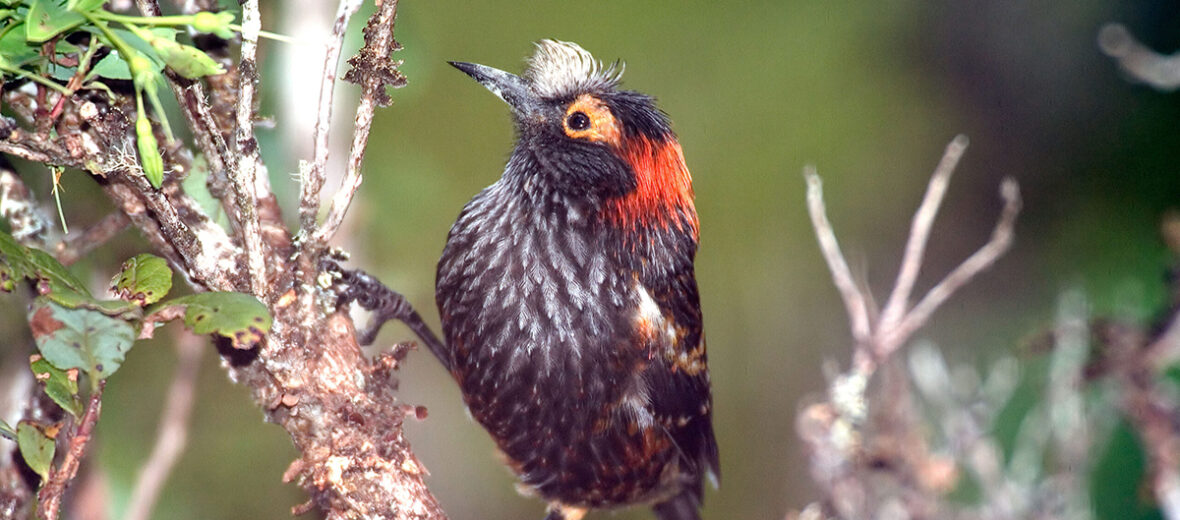
The ‘Ākohekohe, aka crested honeycreeper, can only be found on the island of Maui, in Hawaii. These birds prefer wet forests populated by Acacia koa and ʻōhiʻa lehua on the windy side of Haleakalā. Unfortunately, due to habitat destruction at the hands of farming, ranching, and logging; invasive species, and with them disease, predation, and competition for food; and climate change, and with it flooding and habitat alteration, these birds are listed as Critically Endangered by the IUCN. Their populations of less than 2,500 are also decreasing. This article is dedicated to my friend Eleanor.
First the Stats…
Scientific name: Palmeria dolei
Weight: Up to 1+ ounce
Length: Up to 7 inches
Wingspan: Up to 14 inches
Lifespan: Up to 10 years
Now on to the Facts!
1.) Sadly, these birds are highly susceptible to mosquito‐transmitted avian malaria.
2.) The ʻākohekohe is the biggest known honeycreeper on Maui
3.) These birds dwell at elevations of up to 7,100 feet.
4.) The 2 Maui populations are separated by the Koʻolau Gap.
5.) ‘Ākohekohes are nectarivores (feed only on nectar from flowers) that feed only on the flowers of the ʻōhiʻa lehua. They only feed on insects when the quantity of flowers is depleted.
But wait, there’s more on the ʻākohekohe!
6.) If food is really scarce, they will decend to the forest floor to feed on ʻākala plants.
7.) They are not social birds and will chase away any perceived competition for food.
Did you know…?
These birds were considered extinct until 1945, when a small breeding population was found in the National Area Reserve on Halakea in Maui.
8.) Europeans unintentionally brought 3 species of rats with them that attacked the eggs and chicks of the ʻākohekohes, decimating their populations.
9.) Invasive birds were also introduced to Maui that further competed with the ʻākohekohes for food and habitat.
10.) The songs of the ʻākohekohe birds are varied and include a “whee-o, whee-o”, a “tjook, tjook”, “chouroup”, or an even rarer song, “hur-hur-hur-gluk-gluk-gluk”.
But wait, there’s still more on the ʻākohekohe!
11.) They are currently protected by the Federal Endangered Species Act as of March, 1967. This protection serves to shelter and aid the indigenous life of Maui and Molokaʻi.
12.) Females lay up to 2 eggs each season that only she incubates.
Did you know…?
Cats, rats, barn owls, and mongooses all prey on these birds.
13.) Both parents participate in feeding the chick(s).
14.) ‘Ākohekohe chicks fledge in a few weeks time.
15.) These birds are diurnal (active during the day).
Now a Short ‘Ākohekohe Video!
Be sure to share & comment below! Also, check out the Critter Science YouTube channel. Videos added regularly!
Want to suggest a critter for me to write about? Let me know here.
Some source material acquired from: Wikipedia & IUCN
Photo credit: WildAid



